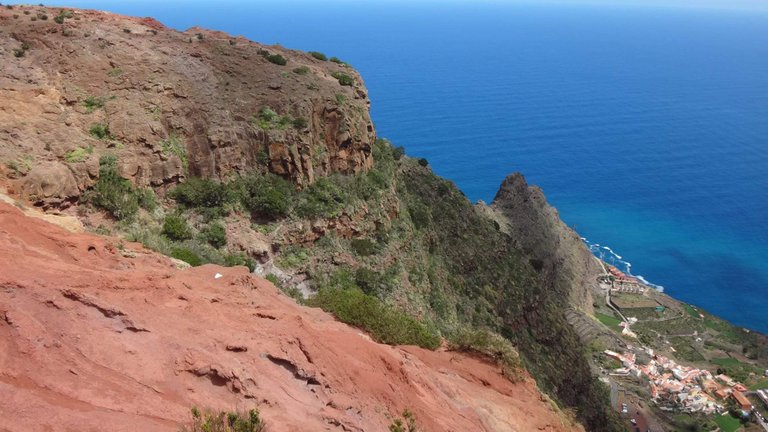
Ancient times
The history of the Canary Islands is shrouded in mystery.
It is known that they were visited by the Ancient Greeks and Romans who called them the "Happy Islands". Along with the Greeks and Romans, settlers called the Guanches came to this land - the first wave about 2,500 years ago, the second 2,000 years ago.
The Guanches, however, were probably not the first settlers on the Canary Islands. Pilus the Elder in his notes from 50 B.C. wrote about the discovery of the ruins of great buildings on the island, but he did not say anything about the indigenous people, which would suggest that either the islands were not well researched, or the previous civilization became extinct until then.

Ancient pyramids from Tenerife - the only proof of the pre-Guanches civilization
Scientists estimate that the first civilization came to the islands from Africa about 5,000 years ago.
In the Middle Ages, the islands were forgotten by Europeans and it was not until the 14th century that Spain "rediscovered" them. At that time, the Spaniards, as part of the colonization and conversion of the local community, killed the Guanches almost completely. Only selected stone terraces used in agriculture and the pyramids in Tenerife have survived after the ancient civilization, the functions of which are still very little known.

stone terraces have a very similar construction to the pyramids. That's why the old buildings remained undiscovered for such a long time
First years of colonization
Over the years, the Canary Islands were inhabited by very few settlers. Their strategic location was very important during the invasion of the Americas. This is where Christopher Columbus and other colonizers and settlers made their last stop before crossing the ocean. On the island of La Gomera, You can still see the Columbus house.

Church in San Sebastián de la Gomera - a tiny town with 8000 habitats which remains the capital city of the island. Here Columbus had his home and from here he was starting all the expeditions to America
La Gomera is very interesting. Almost all the island is one big natural park. 55% of the citizens are related to the Guanches who were living here before. Most of them still know how to use the traditional language of Guanches.
That might be the strangest language you have ever heard because it's constructed with... whistling! That way people were able to communicate on a very long distance. Language is called "el Silbo", check how it sounds here:
However islands were important as the last stop before the transatlantic journey, not many people were living there because life was hampered by limited access to drinking water. There is not a single river in Tenerife or La Gomera. Today, water is obtained from ocean desalination, but a few hundred years ago its storage was dependent on the rain (much easier in green LA Gomera than Tenerife, which is very dry)

Green La Gomera - that rocks are called "Gate to the sky"
Tenerife nowadays
Currently, the island is divided into two parts: the South is full of resorts, luxury hotels, and golf courses. Tourism is the main source of income on the islands, attracting primarily the richest tourists who use the All-Inclusive four and five-star hotels.
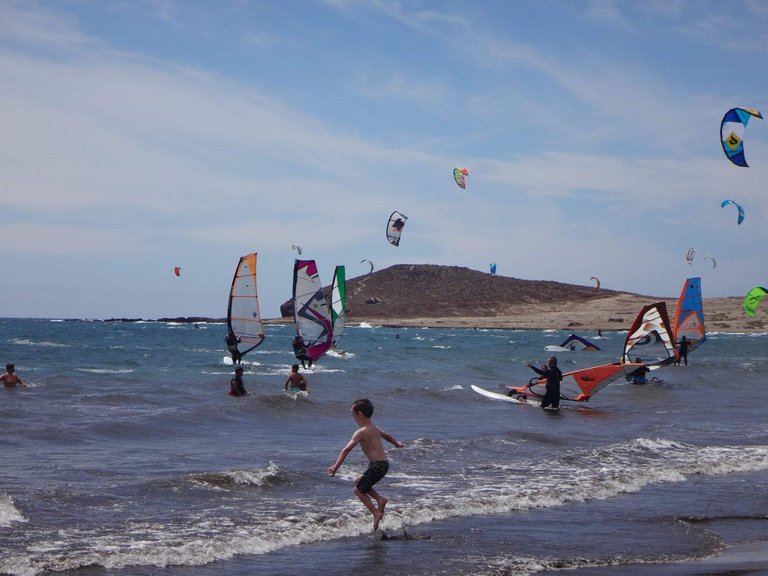
south of the island is very touristic
Thanks to cheap flights between the countries of the European Union, many backpackers come to the islands, so more and more often it is possible to find hostels between expensive hotels. Backpackers also sometimes spend the night in tents in the bosom of nature, which is not legal here, or ... they settle for longer in selected rock caves, often installing solar panels, wifi, and transforming them into comfortable homes.
The north of the island is much less touristy. It is inhabited by permanent residents of Tenerife - working in hotels and the tourism industry, and on banana or aloe plantations, the second main source of income for the locals.

This is not touristic part of the island
Both coasts are separated by a huge national park with the largest mountain in Spain - the still active volcano el Teide, measuring 3718 meters. The volcano can be climbed after obtaining the appropriate permit, and comfortable tourists can use a special electric railway that will take them almost to the top.
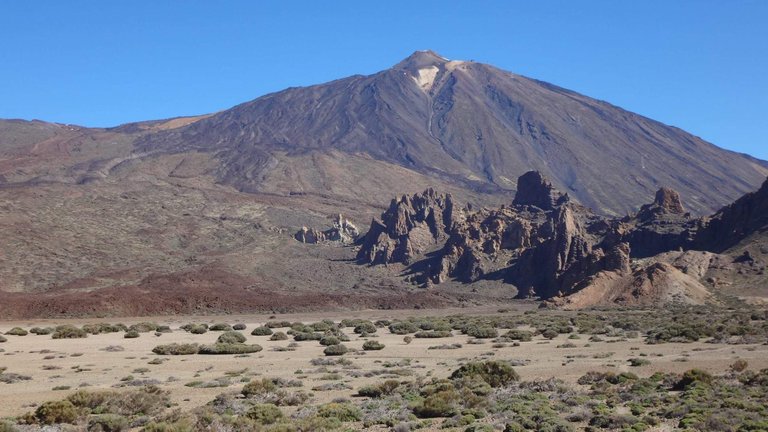
el Teide - Tenerife is the volcanic island
To help you imagine how high this peak is, just think that there was snow on the top of el Teide when I entered it, even though the coast was hot - after all, geographically we were in Africa.

on this altitude it's not difficult for a headache
The island of Tenerife is small. In two weeks we were able to get to know it perfectly. From the east, the greenest Anaga valley, to the west and hiking trails to Los Gigantes, From the north with banana plantations and interesting cities, through the volcano el Teide and the desert around it, to the divine beaches of the south, including numerous beaches for windsurfers, nudists and traditional ones, to golf courses and exclusive hotels.

South provides amazing windsurfing beaches, plenty of great nudist beaches for people who don't like to sunbath in the underwear and some regular beaches with the places to swim

northern coast is not the best for swimming and much colder. You won't find here any tourists but if you like fishing - that's the best place for you
And when you get bored of Tenerife itself, you can always take the ferry and go to one of the other nearby islands. I recommend the closest one, La Gomera, almost completely uninhabited (the only town on the island has just over 8,000 inhabitants).

leaving Tenerife on the ferry

view for the ferry coming to La Gomera dock
Beautiful Dragon Tree
The most spectacular plant on the island is the tree called "Dragon Tree". You will not find it anywhere else around the world, it grows only here.
If you will stab it with some sharp tool, it will start to leek with the red gluey liquid, which native people believed in the blood of the tree and they used it as the medicine for every illness. In fact, it's a kind of resin, and even though it doesn't cure every illness, modern medicine has proven that it helps with digestive problems.
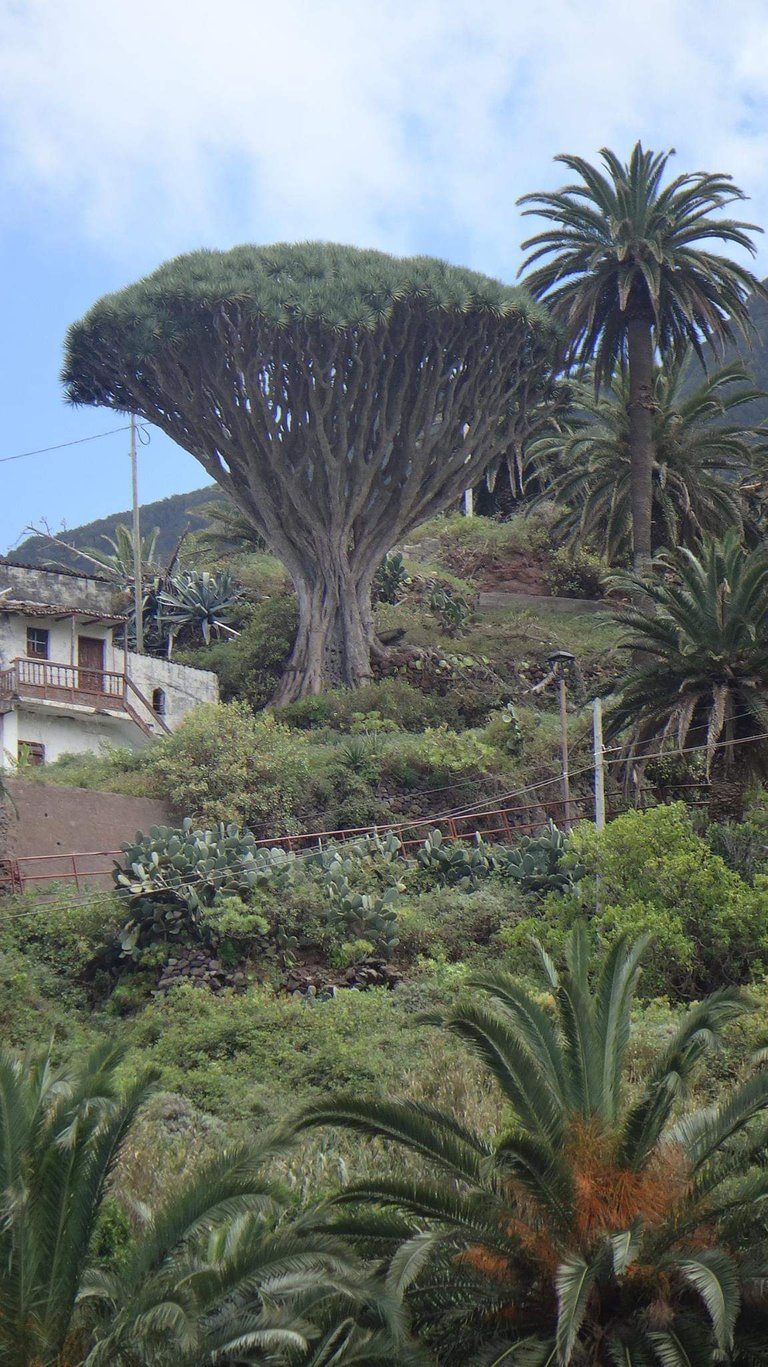
Dragon Tree
Few other photos worth share
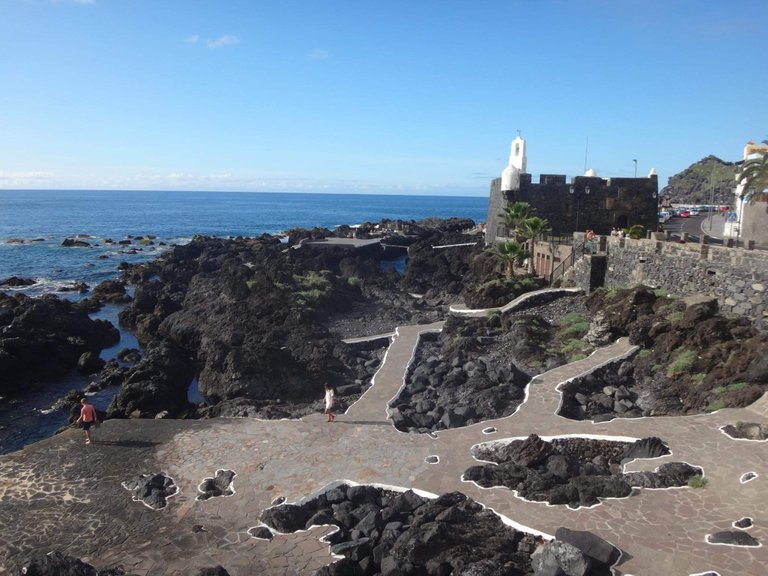
some coastal towns has changed the old lava into walking patch.

Rock Los Gigantes are one of the attractions of Tenerife. Definitely worth to see

Eastern part of the Island
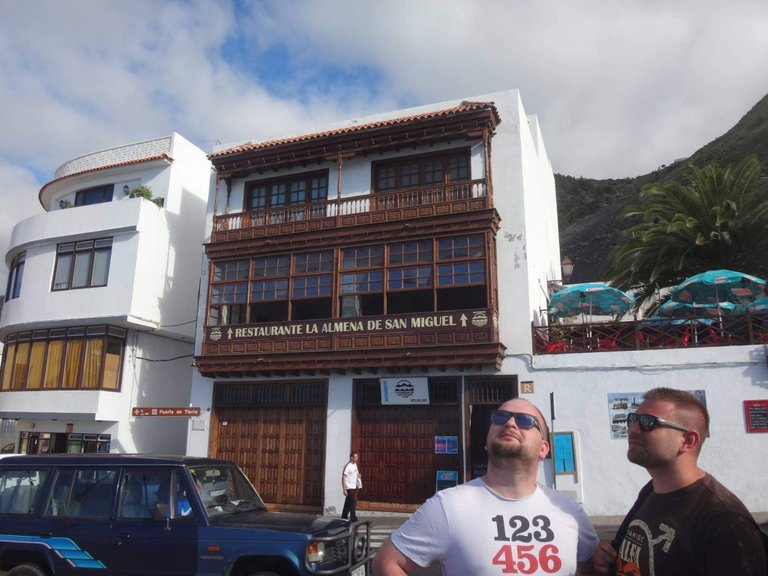
... And one photo with me. I'm also on the photo with lava patch.
Congratulations @papi.mati! You have completed the following achievement on the Hive blockchain and have been rewarded with new badge(s) :
Your next payout target is 250 HP.
The unit is Hive Power equivalent because your rewards can be split into HP and HBD
You can view your badges on your board and compare yourself to others in the Ranking
If you no longer want to receive notifications, reply to this comment with the word
STOPCheck out the last post from @hivebuzz: